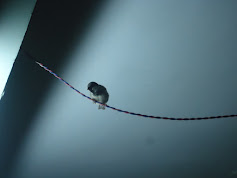Species observed around Annakkili Amma Research Institute (AARI), on 22nd April 2021
|
Species |
Count |
Location |
Observation type |
Observation date |
|
Rock Pigeon (Feral Pigeon) |
30 |
Annakkili Amma Research Institute |
Traveling |
22-Apr-21 |
|
Greater Coucal |
2 |
Annakkili Amma Research Institute |
Traveling |
22-Apr-21 |
|
Asian Koel |
7 |
Annakkili Amma Research Institute |
Traveling |
22-Apr-21 |
|
Asian Palm-Swift |
4 |
Annakkili Amma Research Institute |
Traveling |
22-Apr-21 |
|
Eurasian Moorhen |
16 |
Annakkili Amma Research Institute |
Traveling |
22-Apr-21 |
|
Gray-headed Swamphen |
2 |
Annakkili Amma Research Institute |
Traveling |
22-Apr-21 |
|
White-breasted Waterhen |
15 |
Annakkili Amma Research Institute |
Traveling |
22-Apr-21 |
|
Bronze-winged Jacana |
3 |
Annakkili Amma Research Institute |
Traveling |
22-Apr-21 |
|
Cattle Egret |
2 |
Annakkili Amma Research Institute |
Traveling |
22-Apr-21 |
|
Indian Pond-Heron |
6 |
Annakkili Amma Research Institute |
Traveling |
22-Apr-21 |
|
Glossy Ibis |
2 |
Annakkili Amma Research Institute |
Traveling |
22-Apr-21 |
|
Black-headed Ibis |
1 |
Annakkili Amma Research Institute |
Traveling |
22-Apr-21 |
|
White-throated Kingfisher |
2 |
Annakkili Amma Research Institute |
Traveling |
22-Apr-21 |
|
Black-rumped Flameback |
1 |
Annakkili Amma Research Institute |
Traveling |
22-Apr-21 |
|
Rose-ringed Parakeet |
16 |
Annakkili Amma Research Institute |
Traveling |
22-Apr-21 |
|
Black Drongo |
2 |
Annakkili Amma Research Institute |
Traveling |
22-Apr-21 |
|
House Crow |
13 |
Annakkili Amma Research Institute |
Traveling |
22-Apr-21 |
|
Common Tailorbird |
2 |
Annakkili Amma Research Institute |
Traveling |
22-Apr-21 |
|
Plain Prinia |
1 |
Annakkili Amma Research Institute |
Traveling |
22-Apr-21 |
|
Red-vented Bulbul |
2 |
Annakkili Amma Research Institute |
Traveling |
22-Apr-21 |
|
Yellow-billed Babbler |
10 |
Annakkili Amma Research Institute |
Traveling |
22-Apr-21 |
|
Common Myna |
5 |
Annakkili Amma Research Institute |
Traveling |
22-Apr-21 |
|
Purple-rumped Sunbird |
2 |
Annakkili Amma Research Institute |
Traveling |
22-Apr-21 |
|
Purple Sunbird |
2 |
Annakkili Amma Research Institute |
Traveling |
22-Apr-21 |
|
Indian Silverbill |
6 |
Annakkili Amma Research Institute |
Traveling |
22-Apr-21 |
|
|






















































